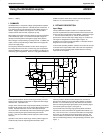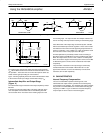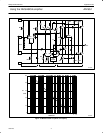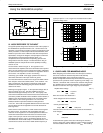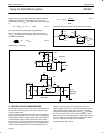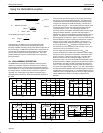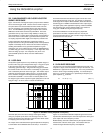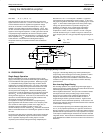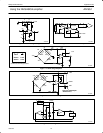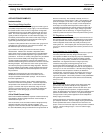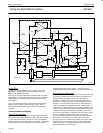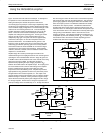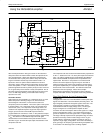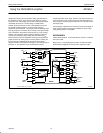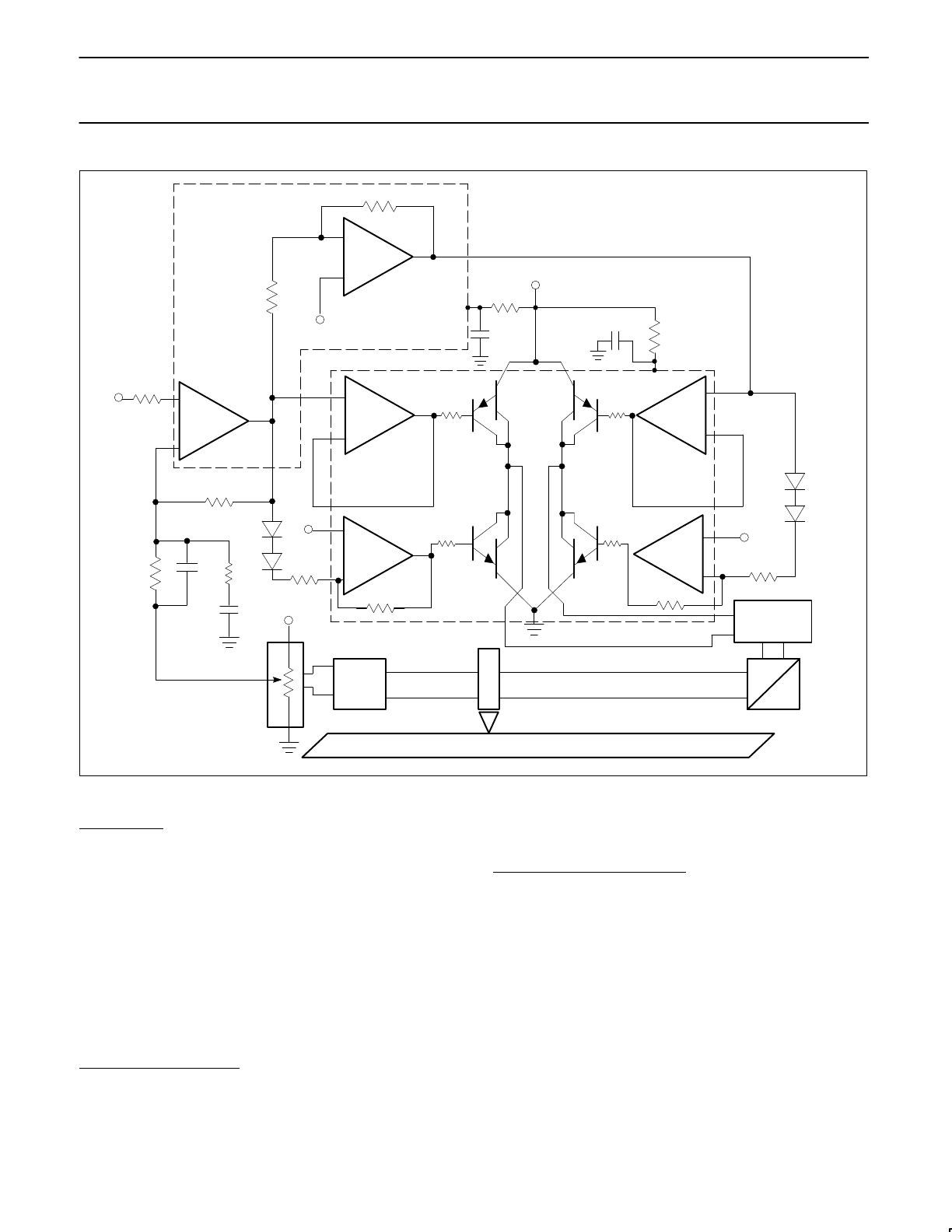
Philips Semiconductors Application note
AN1651Using the NE/SA5234 amplifier
1991 Oct
12
IC-1
NE5234
20kΩ
10kΩ
V
CC
VR1
VR2
10kΩ
150
150
150
150
IC-2
NE5234
BDX45
BDX42
+
–
+
–
+
–
+
–
A3
A2
A4
A5
A6
A1
+
–
+
–
PM
MOTOR
100
1
V
REF
R
S
C
L
C
S
100kΩ
VR1-3 = 1.4V
+4.5VDC
10Ω
10Ω
0.1µF
0.1µF
4
VR2
SL00648
Figure 20. Full Bridge Motor Drive
Active filters
The NE5234 is easily adapted to use in a variety of active filter
applications. Its high open-loop gain and excellent unity gain
stability make it ideal for high-pass,
band-pass and low-pass configurations operated with low voltage
single supplies. Its low output impedance also makes it capable of
obtaining low noise operation without resorting to separate high
current buffers.
Figure 21a shows the circuit for a VCVS low-pass filter with dual
supply biasing and 600Ω output termination. Figure 21b is a
band-pass filter with AC coupled gain network for single supply
operation.
Communications and Audio
Stereo Bridge Amplifier
Figure 22 shows two NE5234 ICs in a bridge amplifier application.
The choice of split supplies allows DC coupling, both from the input
signal source and to the load. The gain is set to a nominal 20dB.
Either inverting or non-inverting operation is available. The inverting
input impedance is chosen as 600Ω in order to match standard
audio impedance lines within a system. The use of two such
amplifiers will provide stereo operation to +10dBm for a 600Ω load.
Voice Operated Microphone
The processing of voice transmissions for communications channels
is generally coupled with the need for keeping the signal-to-noise
ratio high and the intelligibility optimized for a given channel
bandwidth. In addition, when a circuit is battery operated and
portable, the requirement to obtain maximum battery life becomes
important. The circuit example shown here is aimed at filling the
need for a portable voice operated transmitter, cordless phone, or
tape recorder. It utilizes the Philips Semiconductors NE5234 quad
op amp in conjunction with the new low-voltage NE578 compandor
to create an audio processor capable of operating in just such an
environment. Both devices are operational to a low battery voltage
of 2.0V. In addition the design further conserves current by
automatically shifting the NE578 compandor to standby during the
period when no transmissions are being made. Total current
consumption at 3.0V is 2.8mA for the NE5234. In the active mode
the NE578 draws 1.4mA and this drops to 170µA in the standby
mode. This amounts to reducing the supply current demand by
approximately 25% in the ‘listen mode’.



